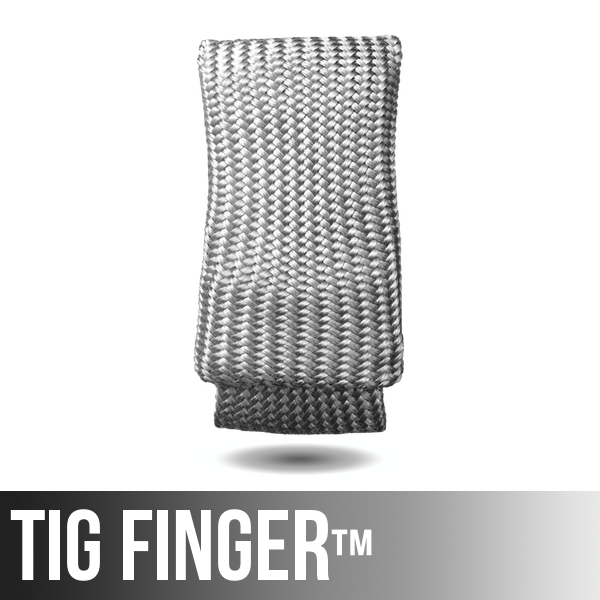Scroll down for part 2!
Video Transcript:
60 ft Metal Rack – Dual Shield Flux Core
Just a few videos ago I talked to JD out back of his new location sitting on a gang box and asked him what kind of work he liked to do. You remember that? What’s your favorite kind of work?
JD: “Favorite kind of work is either big pipe or big mezzanine, just doing the bigger, heavier stuff. It just pays better too.”
This is JD’s new location here in the Newark area. It’s got a nice overhead crane. You can see him moving these pieces with sort of a magnet lifting mechanism. The overhead crane really came in handy also as far as just hauling this stuff over to the horizontal ban saw to get cuts on it, but he’s got two 40 foot sticks, sort of as a make shift table, and they’re on four saw horses, and I’ll show you a little bit more detail on the saw horses a little bit later in the video. He decided to put this thing together in a 40 foot run and then cut it after it was all tacked up and welded and build bolted connections so it’s able to be hauled.
Comes in handy too for being able to clamp down to that 40 foot run and get everything flat and ready for tacking. This is rectangular square tubing, and roughly 3/16ths wall thickness. That’s a little bit less than five millimeters thick, so the welding is going to be doing using 035 Dual Shield flux core. A lot of times JD would use 045, but I’ll explain a little bit why he chose 035 a little bit later in the video. Just getting everything squared up, clamped up so that he can get tack wells on everything. Then, start getting enough weld on it to then be able to manipulate it, because you don’t want to be manipulating this piece with an overhead crane with nothing but tack wells on it.
He’s already got the angled pieces tack welded, and some of them even welded in here. Some of this stuff didn’t get captured on film, and everything is sped up, because it’s quite a long process. This would be an hour long video if we showed everything, but hopefully it’ll be interesting enough anyway. Using that power mig 256 welder there. Again, with 035 link in 71m Dual Shield flux core using C25 gas. It’s a fast, hot process, puts down a lot of metal, and you’re able to actually have quite a bit of adjustment and leeway and gun angle and settings, and you could probably even adjust for 1/8th inch wall tubing if you needed to with 035 all the way up to quarter inch.
You could make this thing weld like a 332 7018 or almost like a 316ths diameter, 7018 just with the settings on the machine. That’s a real benefit of the dual shield flux core process. There’s a lot of moving material around here and a lot of thinking and a lot of figuring out okay, how do we get this thing to be really straight? The floor in here is not that flat. We got the drain in the middle there, so you know the floor slopes pretty much in all directions to that drain. You know, a shim piece here and there underneath the 40 foot runs gets it pretty flat. Then, there will be some give to it at the end. As we tack it all together and get it all fit up there’s some little methods of getting it straight in the end. Then, after it’s all put together, 40 foot run, it’s going to be cut in half and then bolted connections added just to facilitate installation and hauling it and all that.
It was around this point at which JD discovered he needed a spreader bar to start lifting these long pieces that all the sudden were really heavy. Go to the plasma cam, make up some lifting lugs, three lifting lugs to make a spreader bar. A spreader bar extends the distance of two pick points towards picking evenly instead of just using cables that pull at an angle and can mess up your part if it’s flimsy. You know, this is going to use an I-beam with a couple of lifting lugs here. This is three quarter inch material he’s going to cut using the plasma cam here. Really easy to make one and then copy it and then nest them to where there’s no waste of material. Once that’s all done and you’re satisfied with where your holes are and your cut paths are and all that then it’s just a matter of putting your plate on there and hitting a go button and in just a few minutes you’ve got some cut parts.
Again, three quarter inch steel. It’s going to zip out three of these lifting lugs, and in JD’s words, this was on a Sunday afternoon when he was doing this, and the spreader bar store was closed. Like where would you get a spreader bar on order, like on the shelf somewhere when you need one like right now, when you discovered I really can’t lift this big, huge part unless I have a spreader bar? This kind of thing is done all the time in shops. It’s just that the plasma cam really speeds it up and makes for a nice, smooth cut.
Clean them up, get the dross cleaned off and now they’ll be ready for some Dual Shield flux core welding on to a nice, heavy I-beam. There will be two of these welded on each … One on each end and then one in the middle on the other side. This was just a piece of nice, heavy duty I-beam that was out in the lay down yard. This new facility that JD’s working in here has got a nice lot, nice area to have scrap steel. He works with a guy that works on overhead cranes, so having stuff like this laying out in the lay down yard is going to be a pretty common thing for him.
It was fortunate on this day that he had this. That beam might be a little overkill, but another quote that I love is there’s no kill like overkill. It’s really easy to explain why you use too heavy a lug or too heavy a lifting device. It’s hard to explain why you used too light of one. Overhead crane’s got a wireless pendant on it, and you know, it just makes moving stuff like this around the shop a breeze compared to if you didn’t have one, because trying to get a forklift squeezed in there or I don’t know how else you would do it, a gentry on each end or something would be precarious and time consuming.
As I was editing this, I’m watching, you know, it’s kind of like there’s a lot of thought that goes into how do we flip this thing over here? How are we going to fit this thing up? I saw JD change his mind a time or two and decide to go this route and the other route, but that’s kind of like pretty much normal for the process. You have something in mind to start with and then you think of a better way as you’re going, so let’s flip it over this way and do this, or let’s do that. That Dual Shield is sinking those wells in there on those little flare bevel joints that you’re going to have on square tubing like this with that rounded edge, but this was one idea of setting it up here and getting everything straight, but it’s kind of like well, is it going to sit flat, is it going to be level? Is it going to be hard to get it all level and flat like this?
He decided to just flip it over, set it on the floor plates where it mounts and go that route. You’ll see in a little bit why that was a good idea. Turned out to be a really good idea. One piece is already setting flat on the floor plates and it’s already got cross members tacked, so now it’s just a matter of lifting this up, getting it up and over and then had to re-rig there to get the pick points a little lower and get it high enough. Get it up and over and set it down. That way we’ll be able to kind of eye ball and make sure the whole thing looks straight. There will be a little bit of opportunity to straighten it up when it’s cut in half and the bolted connections are added.
Starts straight and you got a lot less work to make something straight. We’re trying to get it all a nice, straight run, and bumping that little wireless pendant on the overhead crane along with a little hip action. Get the thing fit right in place, close enough to work with anyway. Now it’s just a matter of using come alongs and ratchet straps and whatever else is at our disposal. Notice it has a little bow in it, so JD decided to put a bolt in all the floor plates after snapping a chalk line, so we got everything bolted down, and that really straightened it up a lot, so when it’s tacked and a little bit of welding done with it under bolted down and straight like that, that should go a long way into making sure it’s pretty darn close.
Just a really cool level. I think it’s an Empire brand. It’s got little lighted bubbles on it. I’ll stick a link in the description if I can find one of those. Like I said, combination of come along and ratchet straps, and here’s a handy little spacer tool, just a piece of plate with a spacer welded that once you clamp it down tight it centers up the cross members. When you got a lot of something to do it doesn’t make sense just to eye ball and mark and lay out with soap stone. It makes sense to make a spacer. Here’s the skinny on the saw horses here.
When they’re unfolded like that the have a flat surface. 28 and a half inches across. Then, a total height of about 34 inches. That could change according to your needs. One long hinge from a master car holding it all together, and they fold and store real easily. You can just rewind that if you’re interested in that. JD might do a video on the saw horses coming up anyway. I’ll let you know if he does that. This is that Dual Shield punching in to a t-joint. You don’t have to do much manipulation at all, or you can do just a little bit of sideways oscillation of the torch. Got a lot of leeway there again. Depends on what you’re welding, how you settings are and everything, but just a straight up run set pretty hot works real good.
It lays down a nice, big fill it. Very minimal clean up required. It’s got a light slag coating, so a little bit more clean up maybe than if you were doing pulse spray mig or short circuit mig, but a lot less clean up than, say, stick welding. Imagine how many rod changers there would be if you were stick welding this whole project out, how much wasted pieces of stick rod and the time wasted in changing as opposed to just making a whole run without stopping. Dual Shield flux core is a super productive process, especially for a pretty heavy duty fabrication job like this.
Now it’s just a matter of moving it a couple more times to get easy access to all the welds. Because there is an overhead crane in this shop it makes sense just to go ahead and put it up on the saw horses and make all the welds you can and then maybe flip it one time and make the rest not really difficult to make overhead or vertical welds using Dual Shield. In fact, it’s one of the easier processes to switch from, say, vertical to overhead on. I really like these saw horses. They’re only 1/8th inch wall, probably two inch square tubing. They’re heavy duty. They stand up by themselves even when they’re folded up, and super useful as far as that nice, flat surface on the top if you want to rest your pair of channel locks or torpedo level or whatever, or a grinder without falling off. They’re stout, so they’ll be easy to throw on a truck to take on site somewhere.
Incidentally this particular job, JD usually does his installations of this type of things, but this one’s just going to go on a truck and then he’s done with it. Like I said, this will be cut in half and made as just as straight as possible to make it as easy for the installers as possible. Now it’s ready for a whole lot of welding to be done. Maybe have to flip it one more time to get easy access to everything, but it’s got enough welds on it now that we’re flipping it wasn’t a danger. It’s just a matter of dragging those welds in there. You can do a slight pull, a slight push. Just depends on what’s more comfortable, changing the overhead. You don’t really do anything different, same settings work for vertical overhead, horizontal flat, and as long as you keep your stick out distance right and you got your settings set good, set it and forget it basically.
I’ll show the settings in just a second. It’s a good, hot process like I said. You just know you’re burning in with Dual Shield flux core. You got to really do something wrong, like have your polarity wrong or have your wire feed speed way out of wack, have the wrong gas, something like that. Very robust process. Using a little 256 power mig here. These are the settings that were pretty much used for the whole thing. 23.5, 23.6 volts, 370 inches of wire feed. These are the recommended settings for Dual Shield flux core, so using a little bit more wire feed speed, and only using these small 10 or 12 pound spools. The reason for that is that’s what he had on the shelf in 035 diameter. Because he uses those same spool sizes on this 210 MP machine, this one’s good for carrying on site in the field and using Dual Shield flux core.
Here doing a fill and cap on some pipe. It just knocked it out really quick, used a scratch start tig root, fill and cap with a Dual Shield flux core. If you’re in business for yourself I highly recommend if you haven’t tried it already Dual Shield Flux Core’s super productive process. It’ll make you money.
That seems like a pretty good stopping place for part one. In part two, there will be cutting with the Metabo six inch and a slitting wheel. We’ll show that. Then, also using plasma cam again to cut the flange pieces to bolted connections. We’ll show it all put together out in the lay down yard and then how it unbolts for delivery on the trailer. All right. Stay tuned for part two.







Leave a Reply